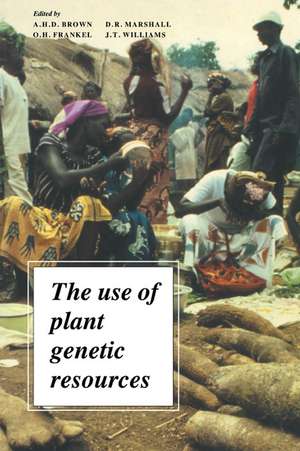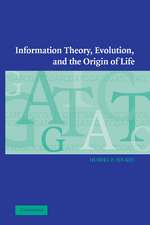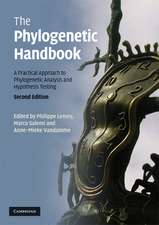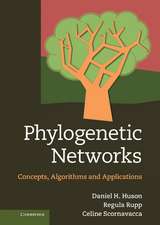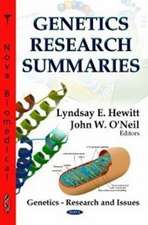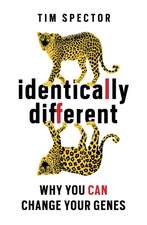The Use of Plant Genetic Resources
Editat de A. H. D. Brown, O. H. Frankel, D. R. Marshall, J. T. Williamsen Limba Engleză Paperback – feb 1989
| Toate formatele și edițiile | Preț | Express |
|---|---|---|
| Paperback (1) | 468.88 lei 6-8 săpt. | |
| Cambridge University Press – feb 1989 | 468.88 lei 6-8 săpt. | |
| Hardback (1) | 768.30 lei 6-8 săpt. | |
| Cambridge University Press – feb 1989 | 768.30 lei 6-8 săpt. |
Preț: 468.88 lei
Nou
Puncte Express: 703
Preț estimativ în valută:
89.75€ • 97.52$ • 75.44£
89.75€ • 97.52$ • 75.44£
Carte tipărită la comandă
Livrare economică 21 aprilie-05 mai
Preluare comenzi: 021 569.72.76
Specificații
ISBN-13: 9780521368865
ISBN-10: 0521368863
Pagini: 396
Dimensiuni: 152 x 228 x 21 mm
Greutate: 0.58 kg
Ediția:New.
Editura: Cambridge University Press
Colecția Cambridge University Press
Locul publicării:Cambridge, United Kingdom
ISBN-10: 0521368863
Pagini: 396
Dimensiuni: 152 x 228 x 21 mm
Greutate: 0.58 kg
Ediția:New.
Editura: Cambridge University Press
Colecția Cambridge University Press
Locul publicării:Cambridge, United Kingdom
Cuprins
Preface; Acknowledgements; Part I. Role of Genetic Resource Collections in Research and Breeding: 1. Germplasm collections and the public plant breeder K. S. Gill; 2. Germplasm collections and the private plant breeder J. S. C. Smith and D. N. Duvick; 3. Germplasm collections and the experimental biologist R. G. Palmer; Part II. Use of Collections: 4. International use of a sorghum germplasm collection K. E. Prasada Rao, M. H. Mengesha and V. G. Reddy; 5. Current use of potato collections J. G. Th. Hermsen; 6. Use of collections in cereal improvement in semi-arid areas J. P. Srivastava and A. B. Damania; 7. Limitations to the use of germplasm collections D. R. Marshall; Part III. Size and Structure of Collections: 8. The case for large collections T. T. Chang; 9. The Case for core collections A. H. D. Brown; 10. The role of networks of dispersed collections P. M. Perret; Part IV. Evaluation: 11. Characterisation and evaluation of okra S. Hamon and D. H. van Sloten; 12. Evaluation of cereals in Europe G. Fischbeck; 13. Evaluatling the germplasm of groundnut (Arachis hypogaea) and wild Arachis species at ICRISAT J. P. Moss, V. Ramanatha Rao and R. W. Gibbons; 14. Practical considerations relevant to effective evaluation J. T. Williams; 15. Principles and strategies of evaluation O. H. Frankel; Part V. Wild Relatives of Crops: 16. Collection strategies for the wild relatives of field crops C. G. D. Cahpman; 17. Wild relatives as sources of disease resistance J. J. Burdon and A. M. Jarosz; 18. Ecological and genetic considerations in collecting and using wild relatives G. Ladizinsky; Part VI. Technological or Scientific Innovations that Affect the use of Genetic Resources: 19. In vitro conservation and germplasm utilisation L. A. Withers; 20. Screening for resistance to diseases P. H. Williams; 21. Restriction fragments as molecular markers for germplasm evaluation and utilisation R. Bernatsky and S. D. Tanksley; 22. Molecular biology and genetic resources W. J. Peacock; Index.
Recenzii
"...a useful reference serving as a 'snapshot' of current concepts and activities in a reemerging area of interest to the scientific community. Its modest price also makes it accessible to a broad range of interested parties." Economic Botany
"...the book is interesting, and presents information well regarding the conservation of plant biodiversity from the gene to species level. We recommend the book to those interested in crops and their relatives." Valeria C. Volin and John C. Volin, Economic Botany
"...the book is interesting, and presents information well regarding the conservation of plant biodiversity from the gene to species level. We recommend the book to those interested in crops and their relatives." Valeria C. Volin and John C. Volin, Economic Botany
Descriere
This 1989 volume stresses the way in which the pool of plant genetic resources provides vital raw material for producing new and improved crops.
